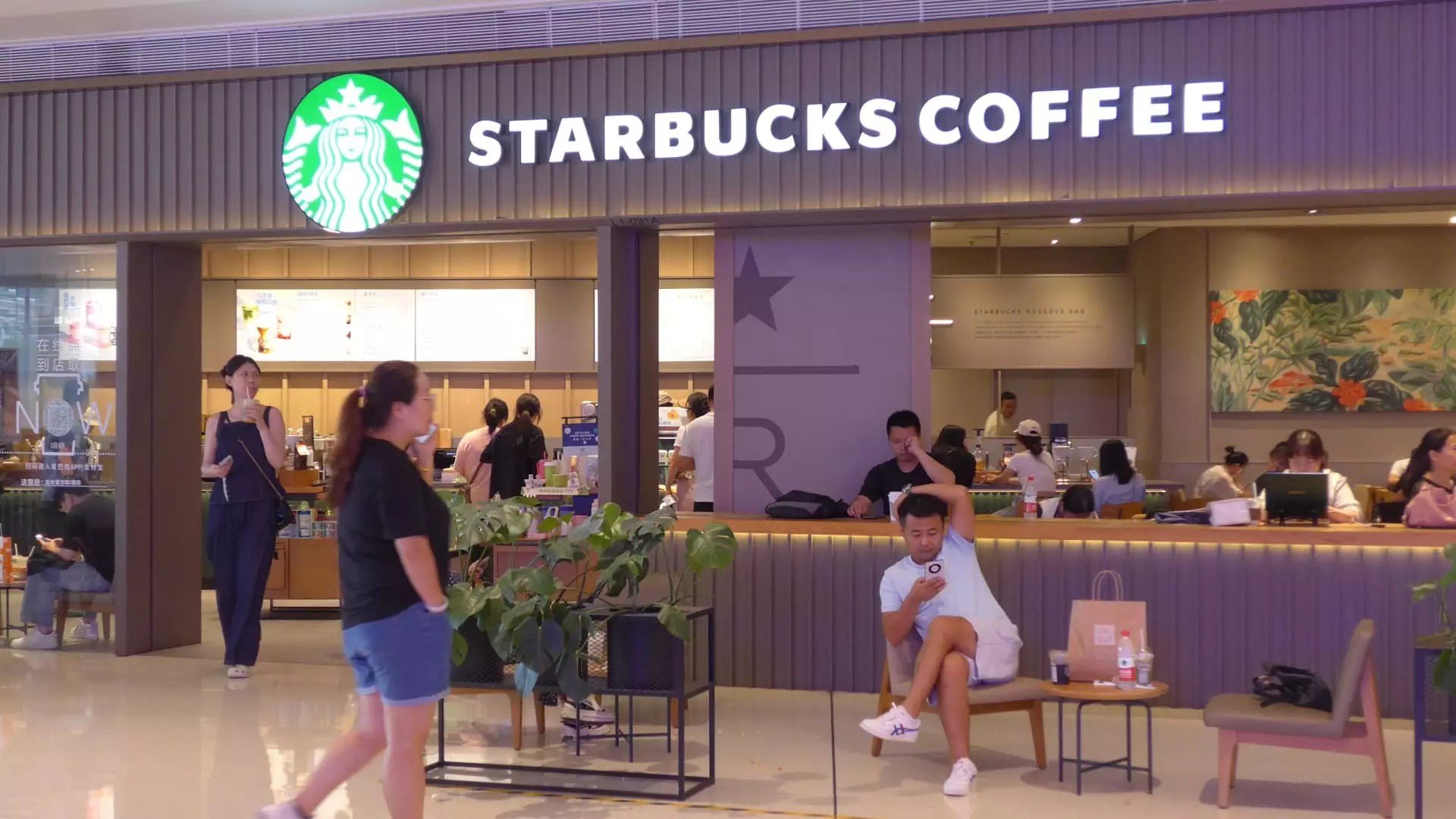Starbucks has long been considered a leader in the global coffee industry, but recent developments indicate that the company is grappling with significant challenges in one of its most important markets: China. During a fourth-quarter earnings call, new CEO Brian Niccol signaled an urgent need to explore the intricacies and hurdles specific to this lucrative yet competitive landscape. With same-store sales declining by 14% in China last quarter, it is clear that the Starbucks brand is facing considerable headwinds. Niccol plans to visit the country in early December to gain firsthand insights into these challenges, which could be a pivotal move for the company.
As Starbucks contends with its declining sales, it finds itself in a fierce battle against a burgeoning range of local coffee chains. The Chinese market has seen a growing number of homegrown competitors such as Luckin Coffee, Cotti Coffee, Manner, and M Stand, among others. Luckin, despite its tumultuous journey that involved accounting scandals and de-listing from Nasdaq, has expanded aggressively and now boasts over 20,000 stores across China. This rapid growth offers an alarming reminder to Starbucks that local entrants are not only competing on quality but also on price.
One of the most telling aspects of this competition is the aggressive pricing strategies employed by these local players. For instance, a small latte at Starbucks might set a consumer back by about $4.22, while at Luckin, it costs a mere $2.25. Even lower prices can be found at Cotti at $1.75 and Manner at $2.11. Such stark price differentials are particularly influential in a slowing economy, where consumers are increasingly scrutinizing their spending. Offers such as 90-cent drinks from Luckin further amplify the competitive pressure on Starbucks, prompting consumers to migrate toward these more cost-effective options.
Another advantage that local chains possess is their ability to adapt quickly and innovate. Many Chinese coffee brands are experimenting with diverse offerings that go beyond traditional coffee, tantalizing customers with unique combinations of flavors. Products that mix coffee with fruit juice, floral infusions, or even unconventional ingredients like cheese or rice have gained traction among adventurous consumers. Manner claims to use only locally sourced beans and trains its staff in operating semi-automatic machines, thereby emphasizing quality and authenticity.
In contrast, Starbucks often sticks to a more traditional menu structure, which may risk alienating younger consumers eager for novelty and variety. The competitiveness of the local market prompts these businesses to frequently revamp their menus, thereby retaining customer interest and loyalty.
Despite these challenges, Starbucks still enjoys a loyal customer base in China. The company holds a revered status as a social hub—an establishment where people can gather for meetings, study, or simply enjoy each other’s company. Its carefully curated ambiance, featuring comfortable seating, cleanliness, and attentive service, has positioned it as a premium social brand. This unique selling proposition sets Starbucks apart from its budget-friendly competitors.
The competitive landscape isn’t limited to coffee alone; tea culture in China poses an additional challenge. Specialty tea shops like ChaPanda and Auntea Jenny are not only capturing the market share but also outpricing Starbucks. These shops sell fruit and milk teas at prices around 60% lower than Starbucks’ offerings, effectively appealing to the thrifty consumer. Traditional lattes are available at astonishingly low prices, such as $2.67 for a latte at Auntea Jenny and an astonishing 56 cents at Mixue. As grab-and-go options for coffee and tea proliferate through tea chains and convenience stores, Starbucks must consider how to adapt to this shifting consumer behavior.
As Brian Niccol prepares for his visit to China, it’s likely that he will gain critical insights into how Starbucks can navigate this tumultuous environment. There is a significant opportunity for the company to rethink its strategies—be it through price adjustments, menu innovation, or enhancing the in-store experience. The Chinese coffee landscape is diverse and highly competitive, offering many low-cost options that challenge Starbucks’ longstanding market dominance.
Ultimately, as the company seeks to reinforce its foothold in China, it must recognize that understanding the intricacies of local consumer behaviors and preferences will be crucial in reversing the decline in same-store sales. If Starbucks can blend its high-quality brand identity with localized strategies that resonate with today’s discerning consumers, it may well reclaim its status as the go-to coffee destination in China.


Leave a Reply